Don’t Overlook the Lovely Luna Moth
Updated: Jun. 21, 2023
The pale green wings and long tails of the luna moth make it an especially lovely sight. Learn how to identify a luna moth and caterpillar.
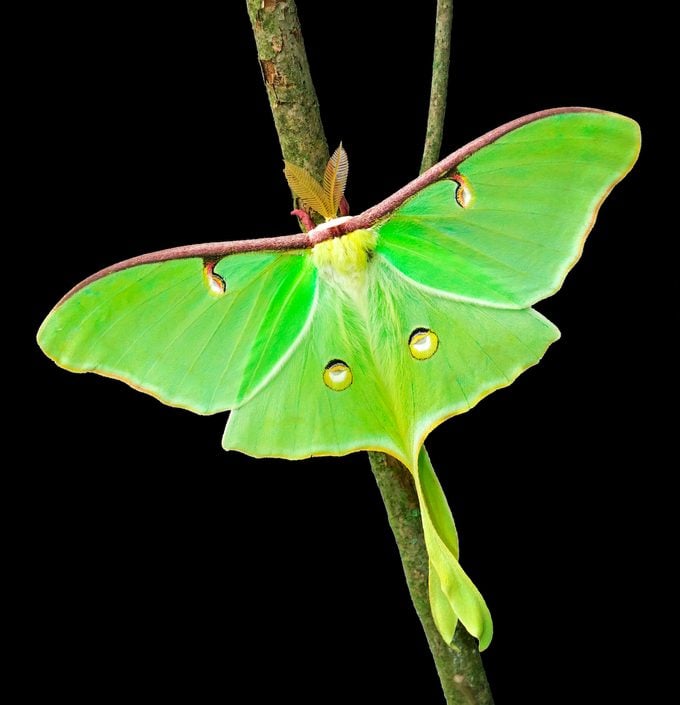
While plenty of people are interested in attracting butterflies to their gardens, many overlook moths. People often think moths are dull in color or too small to be of interest, or that they’ll chew on their sweaters (a bad rap that belongs to only a few species). As a matter of fact, there are plenty of colorful, magnificent moths out there. One of the loveliest? The luna moth (Actias luna), a pale green gem found throughout the eastern U.S. and Canada.
Learn why this backyard beauty deserves a closer look.
How to Identify a Luna Moth
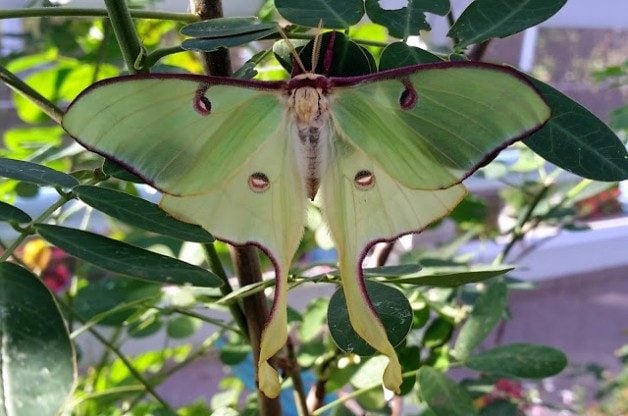
This large, night-flying moth have pale green wings, spanning over 4 inches wide, with tails that extend an inch or two from the bottom wing. Depending on when and where the moth hatched, the 4 wings are lined with yellow or pink. These long tails are part of the luna moth defense system: predators like bats will aim for the flashy tails, which the moth can easily lose without much hardship. The red-brown eyespots on their wings are also for defense. In the dark, these eyespots make the luna moth look like a much larger creature.
Male and female luna moths look very similar, but you can distinguish between the two by looking at their antennae, which are comblike on four sides. Males have large, feathery yellow-green antennae for detecting the pheromones females give off during mating, while female antennae are much more slender, spindly and blue-green (a female is shown above).
- Both sexes have two feathery antennae, but a male uses his wider yellow-green ones to detect a female’s pheromones.
- Although mostly green, the forewings have a dark edge.
- Adults have no mouth parts and never consume a meal.
- Moonlike eyespots dot each of the four wings.
- Wingspan of about 4 inches or more.
- The tail extends 1 or 2 inches past the bottom wing and serves as a defense mechanism. Bats aim for the tail, which the moth can live without.
Here’s why garden moths are important pollinators.
Luna Moth Facts
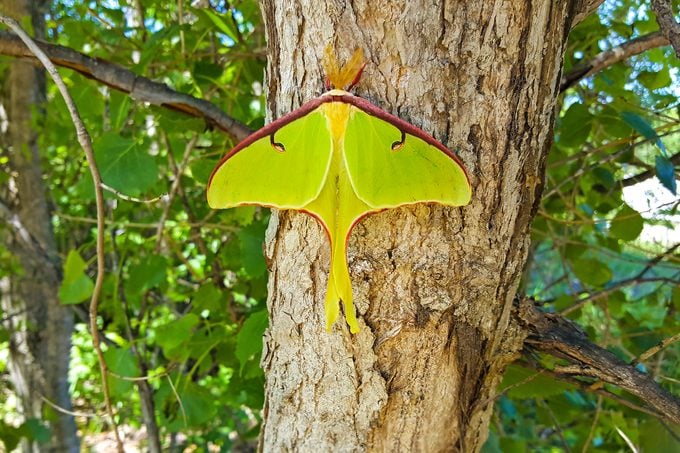
At first glance, this moth looks like a butterfly. Its appealing image appeared on a postage stamp issued in 1987 and served as the logo symbol for a popular sleep medication.
Another luna moth fun fact—this moth received the name “luna” in 1758. The name reflects the transparent, moonlike spots that dot its wings. Its scientific name has changed since then, but luna has kept its cosmic connection.
Learn about sphinx moths, the stars of the evening garden.
Caterpillars and Host Plants
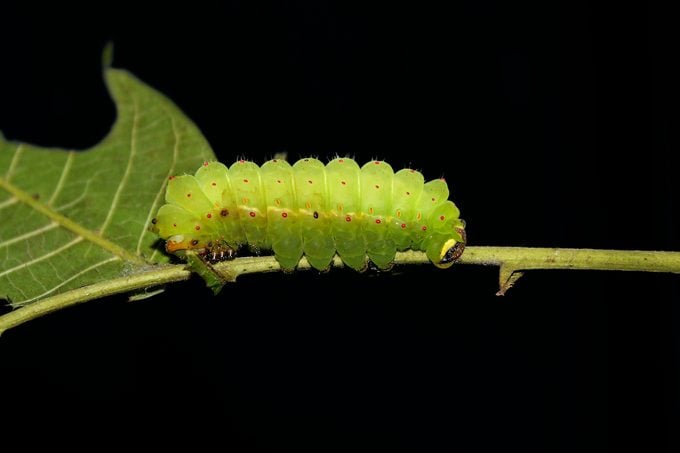
Luna moths are members of the silk moth family (Saturniidae), which boasts a peculiar trait: adult moths have no functional mouth parts and do not eat for their entire existence. They live only long enough to mate.
All the energy they need comes from stored fat from their caterpillar days. Brilliant green luna moth caterpillars nosh on the leaves of birch, walnut, hickory, pecan, persimmon, sweet gum and other trees. The 3-inch, bright green caterpillars might be as thick as a thumb. No matter the stage, members of this species rarely stray far from the host plants.
Discover interesting facts about hummingbird moths.
Luna Moth Cocoon
The caterpillars eat for many weeks before spinning a papery cocoon. Down south, luna moths have three generations each year. In the middle of their range, there are two generations, while in the far north they have only one generation per year.
Luna caterpillars spend two to three weeks in cocoons if they hatch early in the season. Insects that hatch in late summer or fall spend the winter snuggled away in their cocoon, emerging when spring arrives.
Learn about cecropia moths, one of the largest (and prettiest!) moths in America.
Where to Spot a Luna Moth
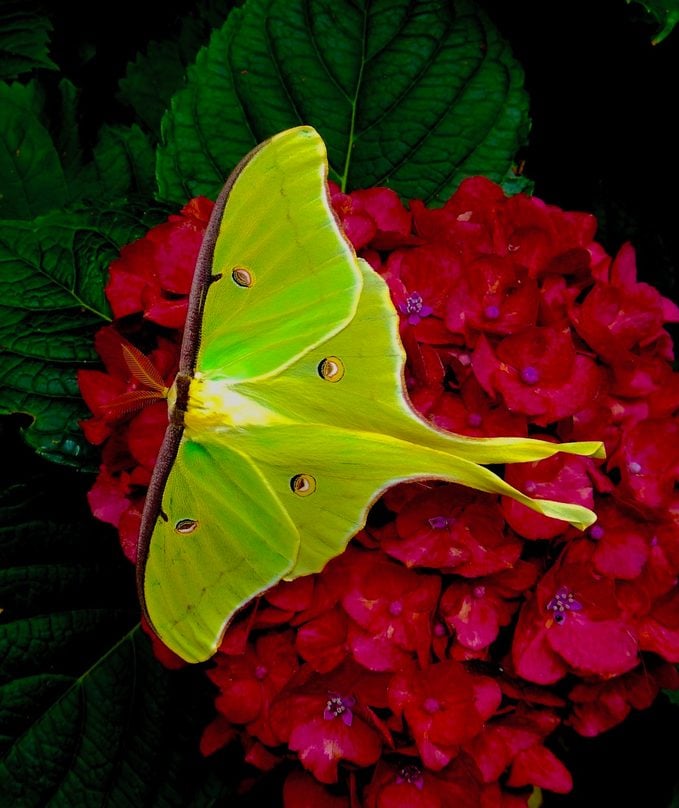
Luna moths are found in the eastern U.S. and Canada, and live only in North America.
It’s not uncommon for most luna moths in one area to emerge within a week or two of each other, especially up north. In some places, that means that thousands of luna moths emerge from cocoons almost simultaneously. After midnight, mating begins.
Females often remain stationary, allowing the males to find them. Within a few hours, the females are ready to lay eggs on their host plants. They lay about 200 eggs at a time. This process repeats itself for several more nights, and within about 5 days, the average luna moth adult has mated, laid eggs, and died.
Luna moths rarely stray far from host plants; they don’t want to waste energy flying far distances. Many people might never encounter one, unless they happen to live near a birch grove or have a large hickory, walnut, or sweetgum tree in their yard.
You can try an old trick of the trade if you’d like to see one. Hang a white sheet in your backyard, and shine a bright spotlight on it. This often brings all kinds of nighttime bugs to visit. (Remember that artificial light can be a distraction to moths who should be focusing on successful mating, so don’t do this for long periods of time.)
Next, learn how to tell the difference in a moth vs a butterfly.
